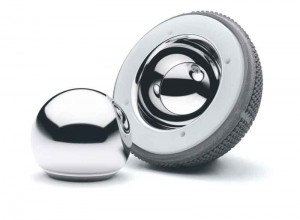Zimmer Lawsuit Alleges Unacceptably High Failure Rate of Hip Implants

Joseph E. Kirkland was a recipient of the Durom Acetabular Component, or Durom Cup, a hip implant designed and manufactured by Zimmer Holdings, Inc. Now, he’s suing Zimmer for what he calls defects that “presented an unreasonably dangerous risk.”
Kirkland claims that the allegedly defective Durom Cup hip failed prematurely, leading to serious injuries and other damages. The Mississippi plaintiff filed his Zimmer hip lawsuit in the U.S. District Court for the District of New Jersey. He is demanding economic and non-economic damages in excess of $75,000, including compensatory damages, punitive damages, and disgorgement of profits.
Plaintiff alleges considerable losses after device failure
On June 18, 2007, the plaintiff underwent an orthopedic procedure to have the Durom Cup implanted into his right hip. However, the plaintiff was forced to undergo hip revision surgery on June 13, 2013 due to complications, including severe pain. The plaintiff claims that his ability to participate in his usual daily activities has been severely restricted, that he can no longer perform everyday responsibilities, and that his family has been forced to “adjust their lives to accommodate plaintiff’s ongoing injuries.”
At the time of the initial surgery, Kirkland was informed that he would have a minimal recovery period. He was informed that the Zimmer hip implant would have a lifespan of 15 to 20 years. Kirkland looked forward to improvements in his quality of life after receiving the implant, yet only suffered from more pain and physical injuries, according to his hip replacement lawsuit. Those medical complications included being diagnosed with elevated metal ion levels and soft tissue reaction to metallic fragments. The orthopedic surgeon who performed his revision surgery discovered that he had aseptic failure of the Zimmer hip implant.
Durom Cup failure rate scrutinized in lawsuit
The Durom Cup is a metal-on-metal hip implant designed to replace a natural hip joint that has become severely damaged through disease or trauma. Unlike other types of implants, it is not affixed in place with cement or screws. Rather, the design of the Durom Cup was supposed to enable it to bond directly to the bone. The porous outside of the device was engineered for the purpose of allowing the patient’s bone to grow directly into the cup in order to hold the implant in place.
According to Kirkland’s Durom Cup lawsuit, the defective design of the implant does not allow it to function as intended. Instead of adhering to the natural bone, the Durom Cup can come loose and inflict damage on the pelvic bone. Failure of the device in this manner can lead to excruciating and ongoing pain, alleges the plaintiff.
The plaintiff’s lawsuit points out that a leading orthopedic surgeon estimates the “unacceptable failure rate” at upwards of 24 percent. The defendants had predicted the failure rate of the device to be no more than 5.7 percent. The estimated failure rate of more than 24 percent was established by examining patient data over a four-year period.
The plaintiff’s lawsuit points out that a 24-plus percent failure rate is higher than the failure rates associated with Zimmer’s other products and competitors’ products. His Zimmer hip lawsuit demands compensation for the defendants’ alleged inadequate warnings, inadequate testing, and improper failure to recall the Durom Cup despite a brief suspension in sales.
- Zimmer, Hip Replacement Products, http://www.zimmer.com/medical-professionals/products/hip.html
- WebMD, Arthritis and Hip Replacement Surgery, http://www.webmd.com/osteoarthritis/guide/hip-replacement-surgery


 Resources
Resources
 Resources
Resources